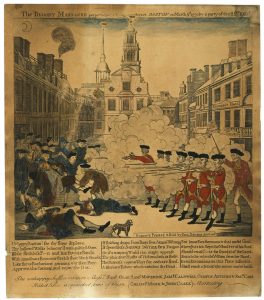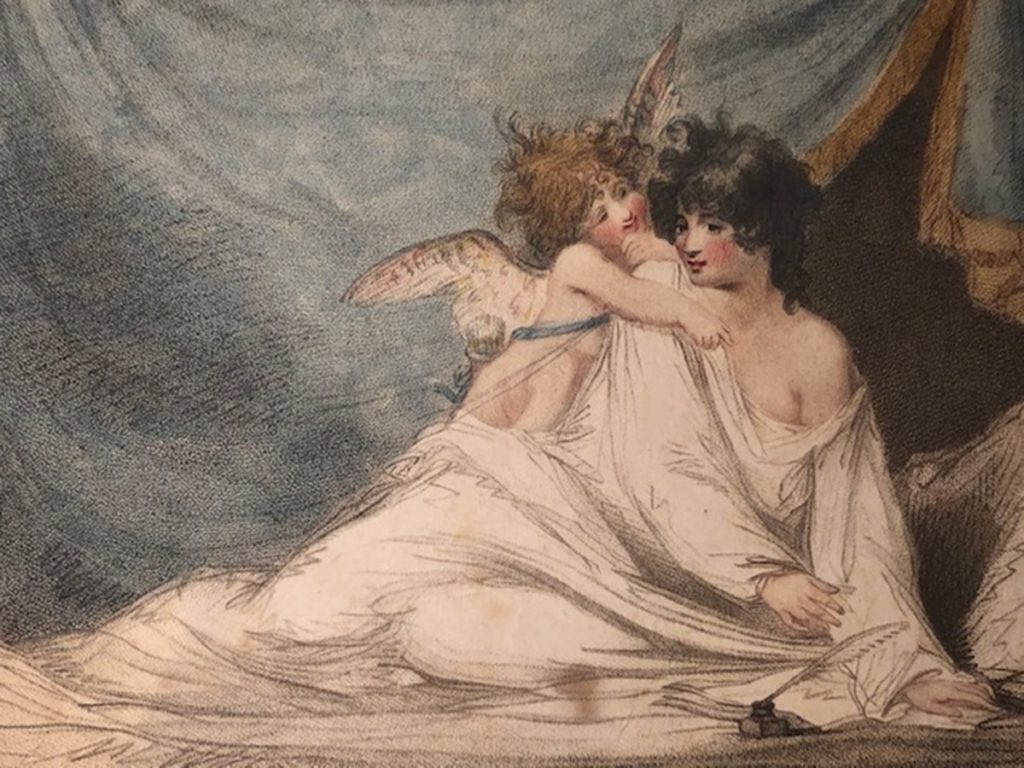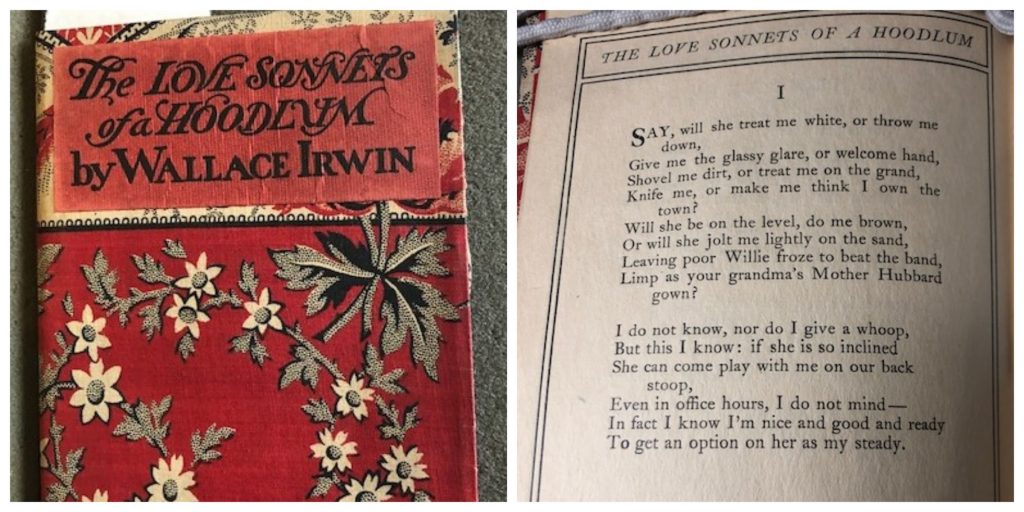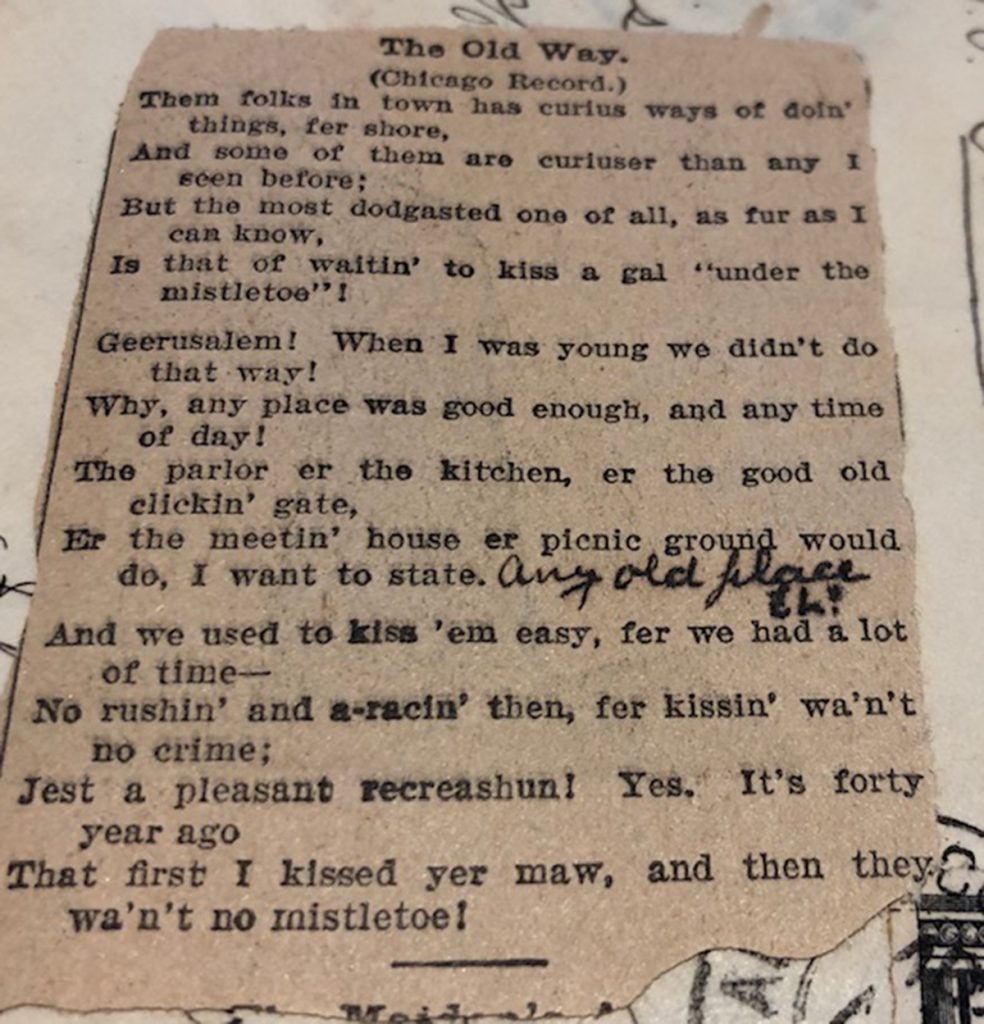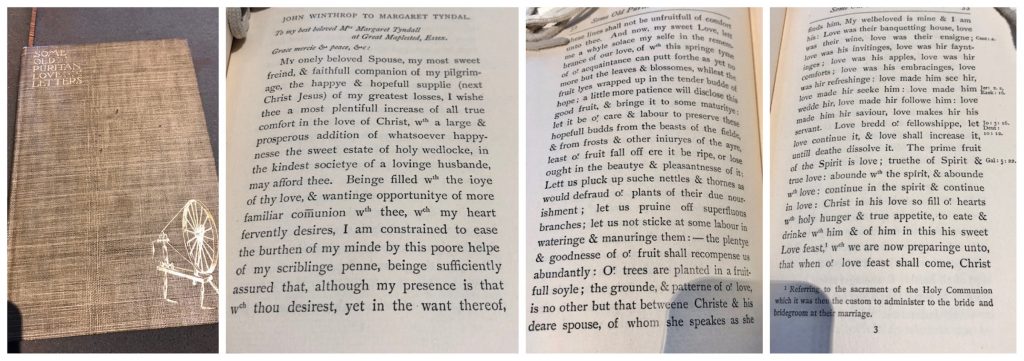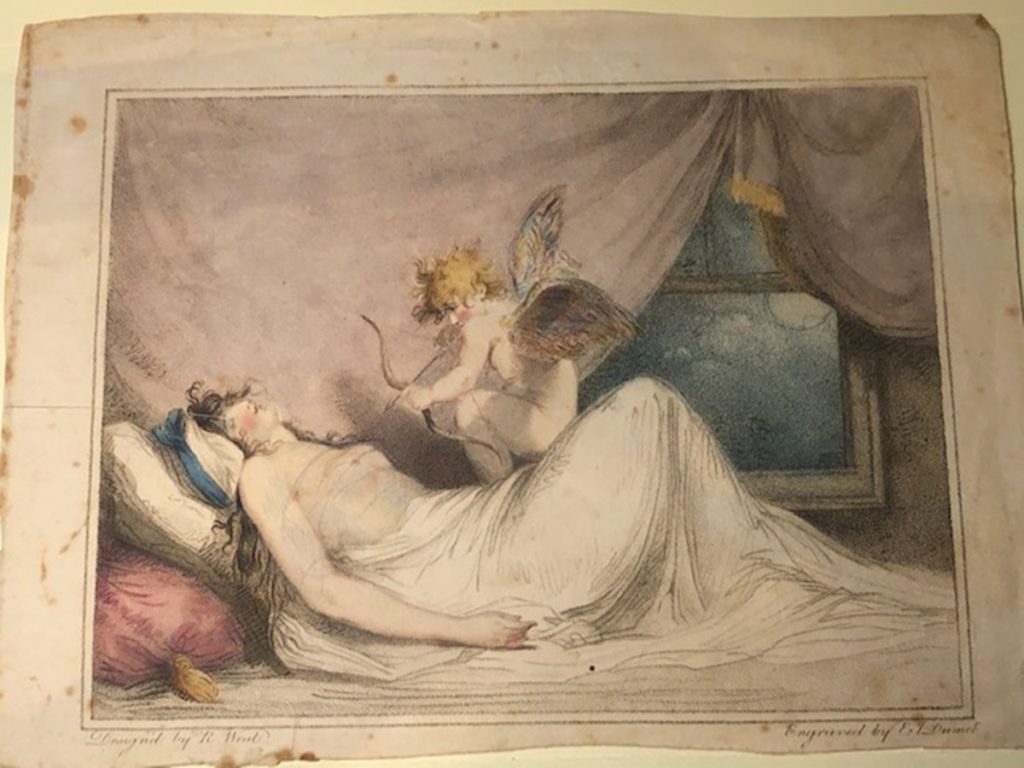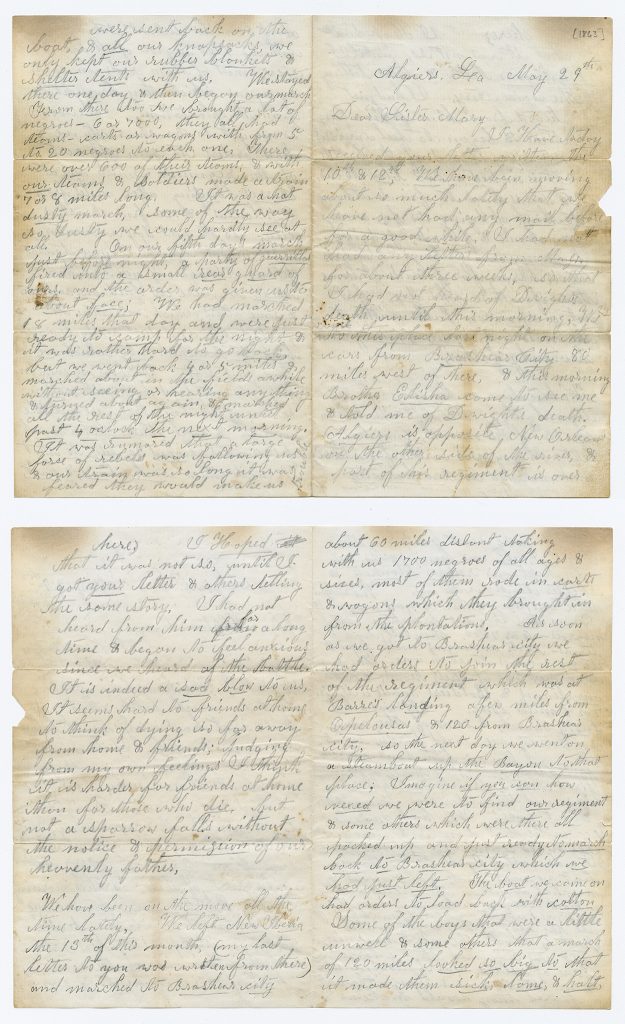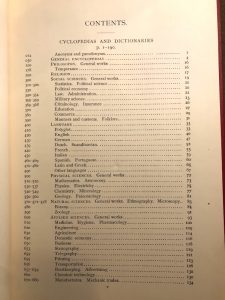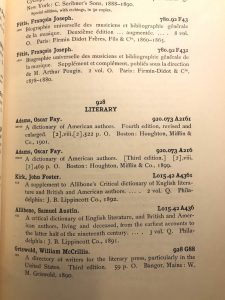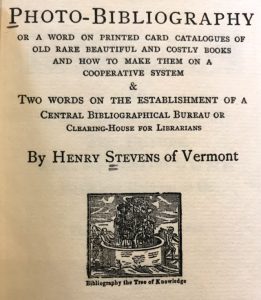by Florentina Gutierrez, Library Assistant
Browsing through processed archival collections can sometimes lead to unexpected surprises. Recently, I was going through a box of the Channing Family Papers (1685-1956), looking for a particular letter that a patron inquired about. Because I did not have a specific date, only subject matter and year range, it meant looking at almost every document that met those general criteria. Out of the countless letters, a five-page long handwritten newspaper stood out to me.
I have never seen a handwritten newspaper, outside of the context of an elementary school assignment where I was asked to create one. The top of this particular newspaper says “Weekly News: Brattleboro” and was dated August 9th, 1843. Below that, to the left, it also says “Vol. I. Published Weekly at the store of M. Wheeler & Co. [Terms?] one cent.” At first, I thought that perhaps someone in the town of Brattleboro produced handwritten newspapers to distribute throughout the town, which I could only imagine was extremely time consuming. I wondered, how many copies of these were written? And were they written every week?
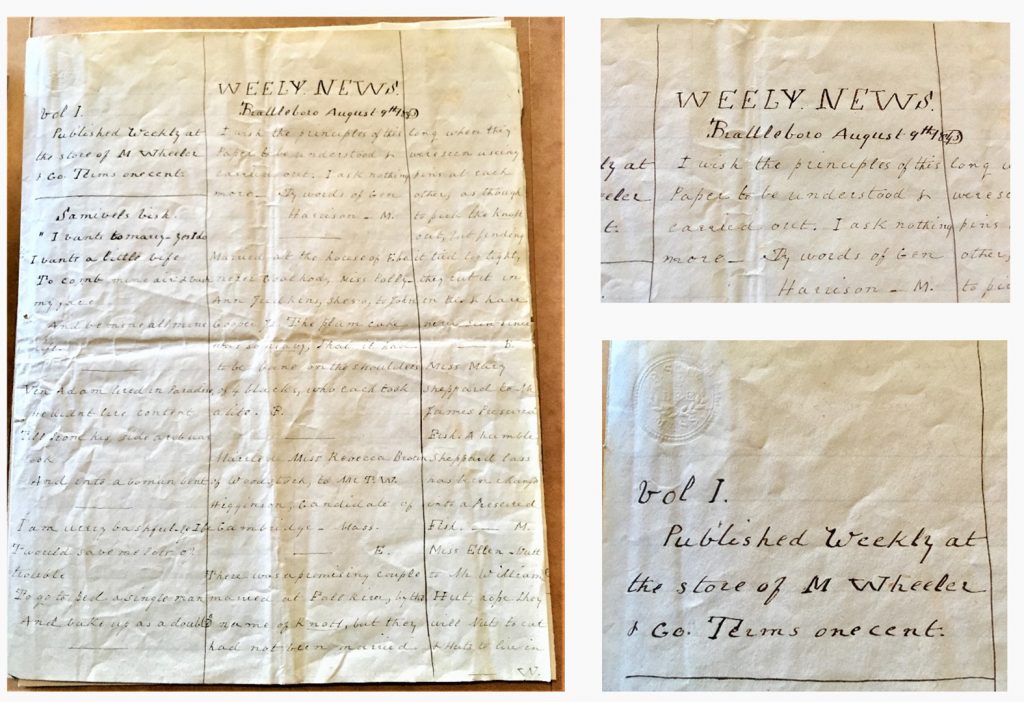
Actually, a handwritten newspaper is not such a crazy idea, even after the invention of the printing press. There are many examples of handwritten newspapers from the 19th century, some were likely created because of a lack of resources, and others perhaps because they were considered the most appropriate way to communicate. I found some examples at The Handwritten News Project website; the ones referenced there are mainly from North America and date to the 19th century.
Reading through this newspaper, it quickly became apparent that this was not meant as a particularly serious/factual “newspaper” and was likely not one that was distributed to the public. The contents of it are varied, including marriage announcements, short stories, advertisements for goods and services, and lost and found items. Nevertheless, weaved among what appear to be real events in the town are a lot of snippets clearly meant to come off as humorous and witty, and that are overall quirky.
Here are a few lines, transcribed as they were written in the document:
“Miss Ellen Nutt to Mr. William Hut, hope they will Nuts to eat & Huts to live in. -W.”
“Sale at the store of Peter Grimes a wonderful mixture, which will not only make persons sneeze, cough, laugh, & cry at pleasure, but it effects the heart so deeply as to make a man fall in love with the first girl that goes round the corner. -B.
I can bear witness to the efficacy of Peter Grimes medicine, for I never should have been married, if I had not turned the corner. -Ellen Hut.”
“I have got a darned hole in my stocking [Mom?]… I am very glad my son, I shall not have to mend it. -M.”
“Lost a beautiful white cat, with blue spots, & a black tail, anyone who finds it, shall be rewarded with a bite from the cat. -Lizzy.”
“Just published, the life of the remarkable man, who waded across Charles river & was drowned just as he was getting in to the stage on dry land. -Reb.”
“Fire broke out at Melissa Simons’s, it broke out in the toe of her shoe, for she was in the habit of keeping her matches inside of her shoe. -M.”
“I am not as cool as I ought to be, as the boiled cucumber said. -W.”
Almost every section is signed off with an initial. The ones appearing most often were B, M, W. Reading through the Channing Family Paper collection guide, it is likely that those initials refer to Barbara H. Channing (1786-1876) and William Ellery Channing (1817-1901), both the children of Dr. Walter Channing, and to Mary E. Channing Higginson, related to the Channings by marriage and with who Barbara may have been close to as there is remaining correspondence that was sent between them.
While the newspaper is not addressed to anyone in particular, I think it likely was meant as a type of letter to a close relative or friend of the Channings in order to provide them with an update/”gossip” of the town. In a time without texting or social media or even the ease of transportation we currently enjoy, it makes sense that people would find creative ways to communicate with each other while having a little fun.
If you are interested in learning more about handwritten news, you can check out a list of resources put together by The Handwritten News Project here.


